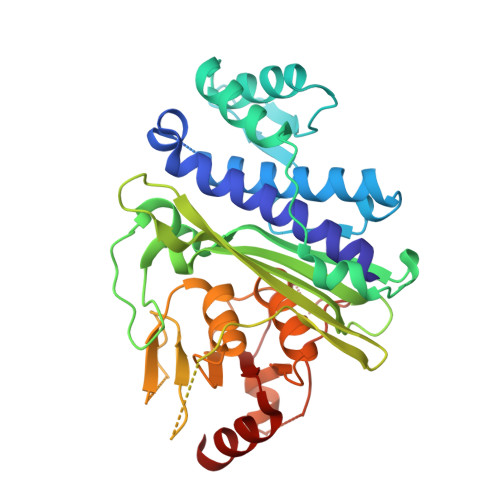A structural basis for lithium and substrate binding of an inositide phosphatase.
Dollins, D.E., Xiong, J.P., Endo-Streeter, S., Anderson, D.E., Bansal, V.S., Ponder, J.W., Ren, Y., York, J.D.(2020) J Biological Chem 296: 100059-100059
- PubMed: 33172890
- DOI: https://doi.org/10.1074/jbc.RA120.014057
- Primary Citation of Related Structures:
6WRO, 6WRR, 6WRY, 6X25, 7KIO, 7KIR - PubMed Abstract:
Inositol polyphosphate 1-phosphatase (INPP1) is a prototype member of metal-dependent/lithium-inhibited phosphomonoesterase protein family defined by a conserved three-dimensional core structure. Enzymes within this family function in distinct pathways including inositide signaling, gluconeogenesis, and sulfur assimilation. Using structural and biochemical studies, we report the effect of substrate and lithium on a network of metal binding sites within the catalytic center of INPP1. We find that lithium preferentially occupies a key site involved in metal-activation only when substrate or product is added. Mutation of a conserved residue that selectively coordinates the putative lithium-binding site results in a dramatic 100-fold reduction in the inhibitory constant as compared with wild-type. Furthermore, we report the INPP1/inositol 1,4-bisphosphate complex which illuminates key features of the enzyme active site. Our results provide insights into a structural basis for uncompetitive lithium inhibition and substrate recognition and define a sequence motif for metal binding within this family of regulatory phosphatases.
- Department of Pharmacology and Cancer Biology, Duke University, Durham, North Carolina, USA.
Organizational Affiliation:


















